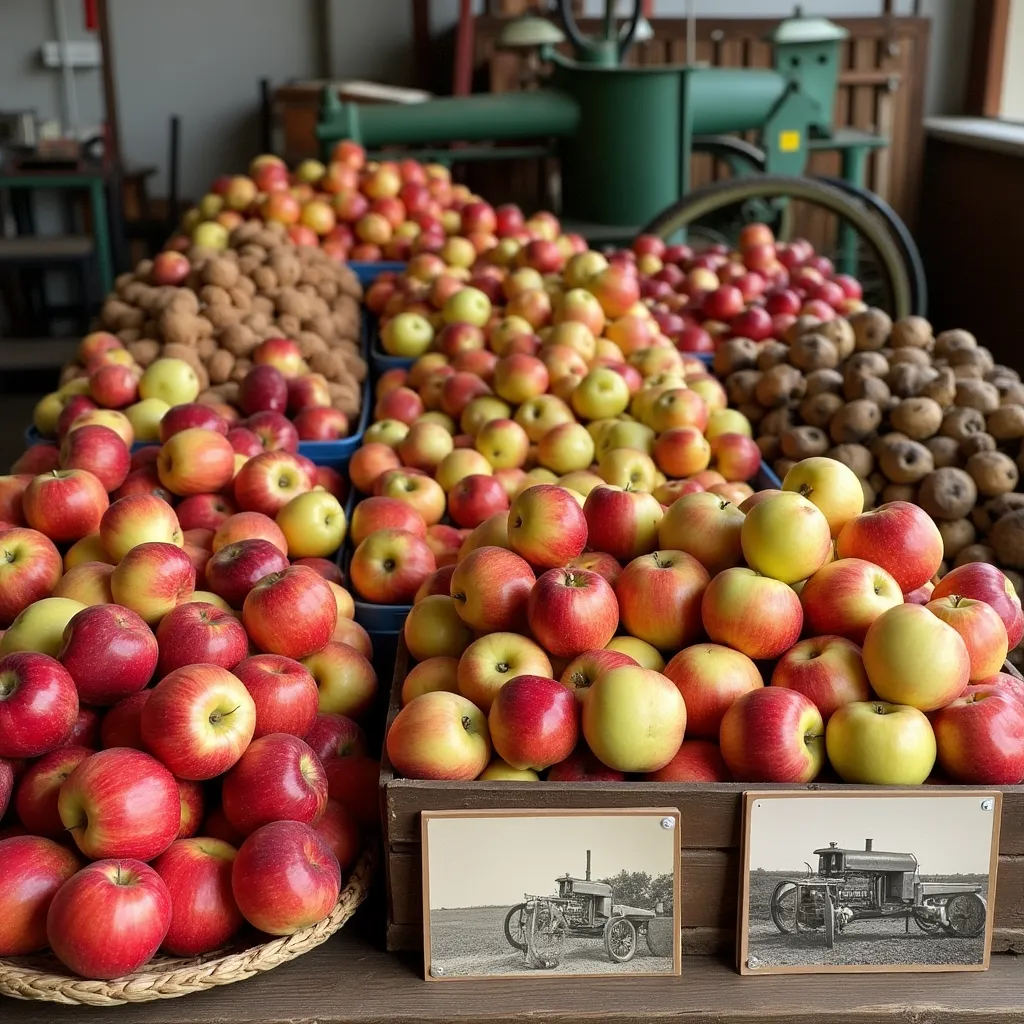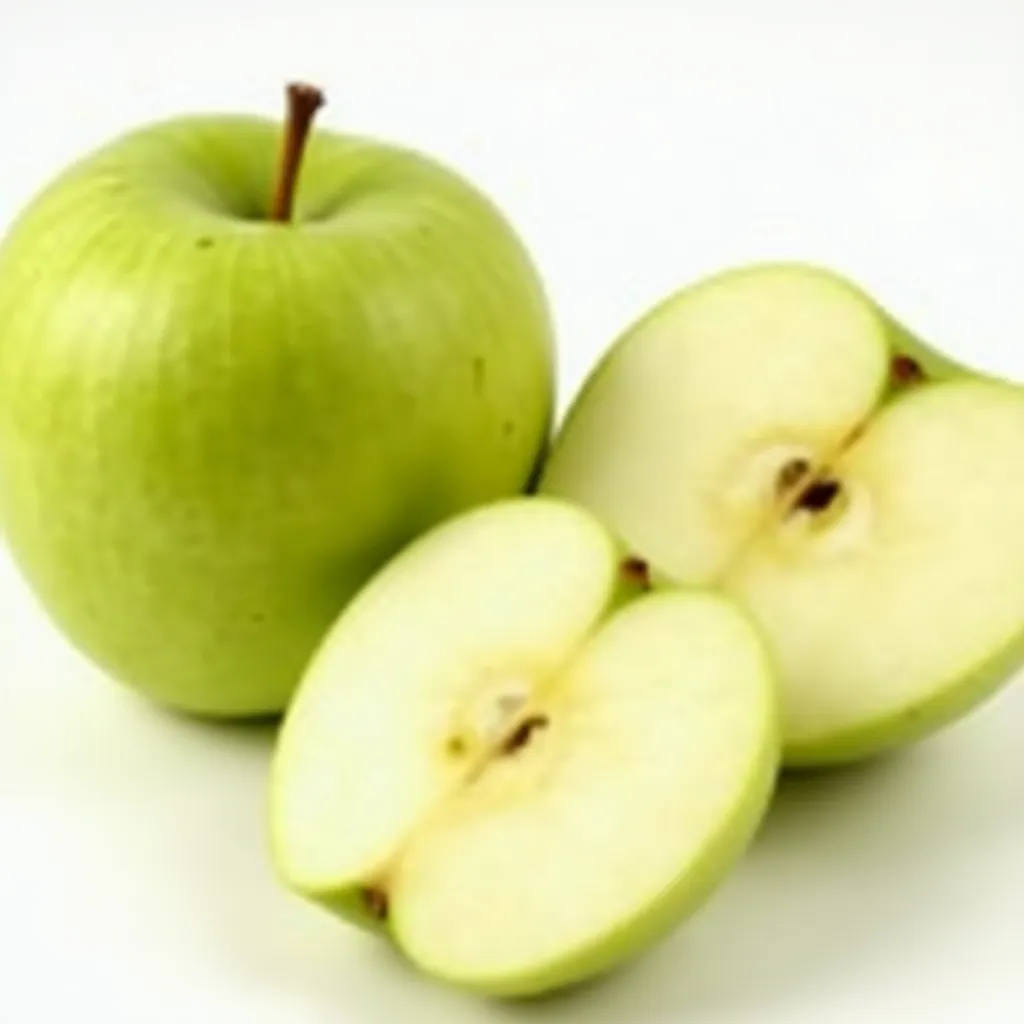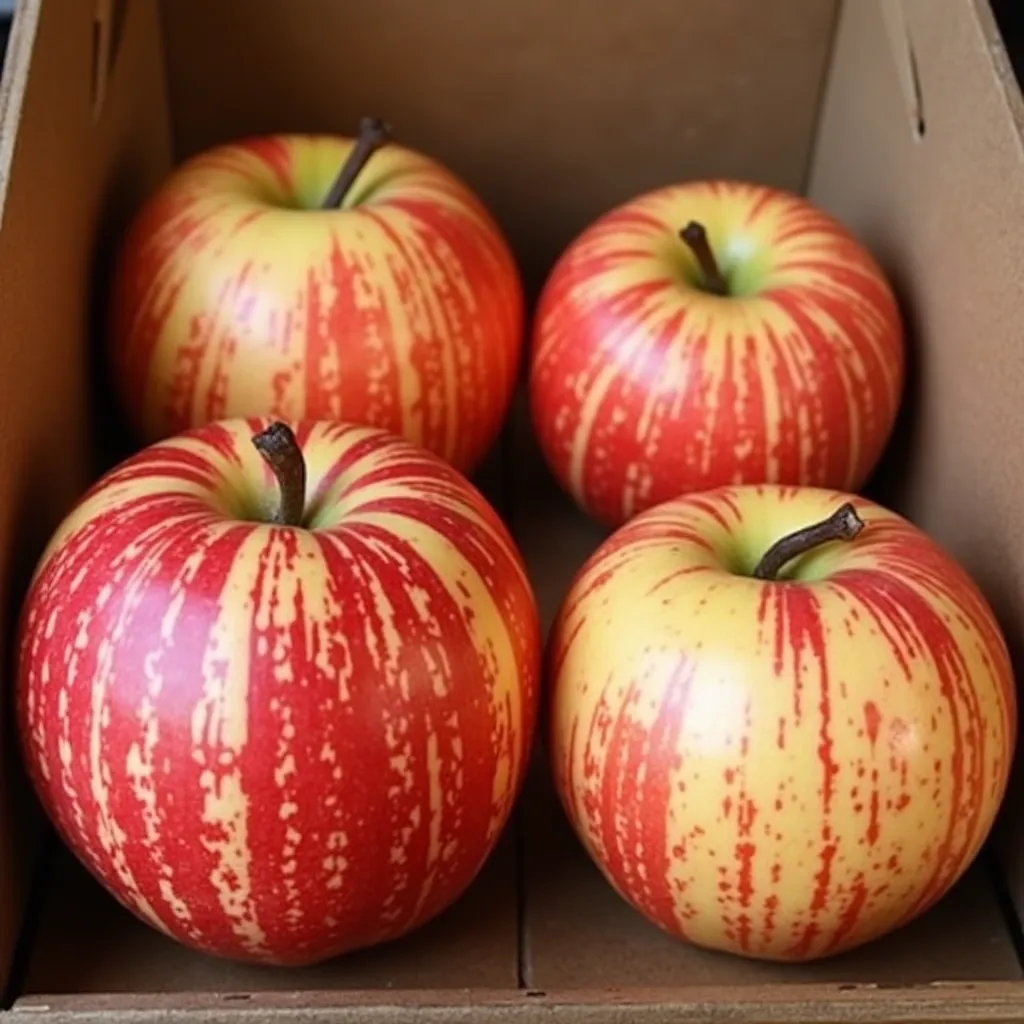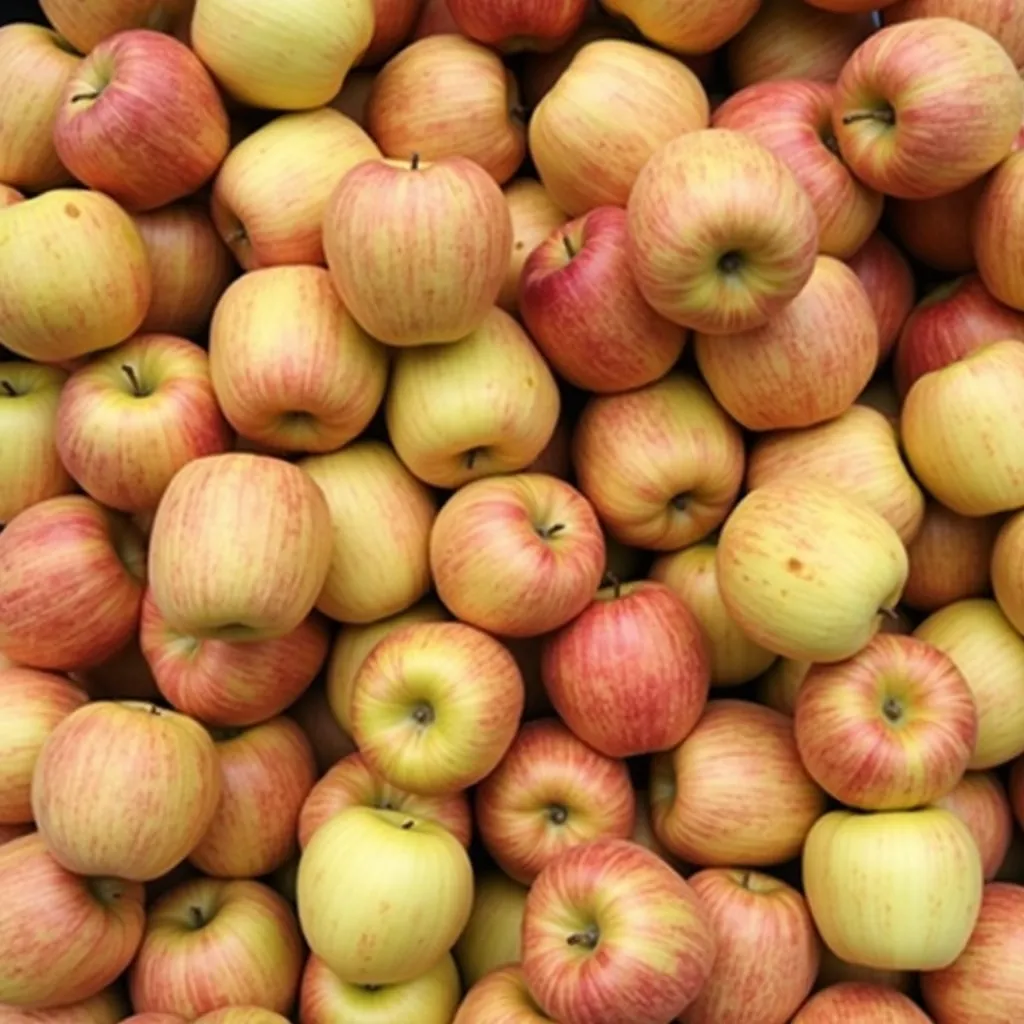· varieties · 4 min read
Classic American Heritage Apples: From Albemarle to Grimes Golden
Explore the rich history and delightful flavors of classic American heritage apples like Albemarle Pippin and Grimes Golden. These varieties offer a taste of the past with their unique characteristics and versatile uses.

Variety Overview
Classic American Heritage apples, encompassing varieties like the Albemarle Pippin and Grimes Golden apple, represent a treasured piece of American agricultural history. These antique apple varieties, sometimes referred to as ancient apple varieties, offer a unique blend of flavors and textures that harken back to a time before mass-produced fruit. Known for their balanced sweet and tart taste, crisp and firm texture, and generally good storage life, these apples are versatile enough for fresh eating, baking, and cooking. Their medium size and appealing yellow and green coloration, often with striped patterns, make them a beautiful addition to any orchard or fruit bowl.
Characteristics
These heritage apples boast a complex flavor profile, offering a delightful mix of sweet, tart, and balanced notes. The texture is satisfyingly crisp and firm, making for a pleasant eating experience. Visually, they are appealing with their medium size and predominantly yellow and green skin. Some varieties exhibit a solid color, while others display subtle stripes.
Growing Information
Cultivating these heritage varieties is moderately challenging. They thrive in spring and summer, with an early to mid harvest season. These trees exhibit moderate disease resistance, requiring some attention to pest and disease management. They are generally well-suited to a variety of growing conditions but perform best with proper care and maintenance.
Best Uses
These apples shine in a variety of culinary applications. They are excellent for fresh-eating, providing a refreshing and flavorful snack. Their firm texture holds up well in baking, making them ideal for pies, crisps, and cakes. Additionally, their balanced flavor profile complements savory dishes, making them suitable for cooking into sauces, chutneys, or adding to roasted meats.
History and Origin
Originating in the United States, these classic varieties have a rich history. This particular selection, representative of mid-20th century breeding, likely shares parentage with the well-known Golden Delicious and Red Delicious apples, developed around 1950. They represent a continuation of the tradition of cultivating flavorful and versatile apples that began with earlier varieties like the Albemarle Pippin.
Storage and Handling
With a good storage life, these heritage apples can be enjoyed for an extended period. To maintain their quality, store them in a cool, dark, and humid environment, such as a refrigerator crisper drawer or a cellar. Properly stored, they can retain their crispness and flavor for several weeks or even months.
Availability
These apples are typically available during the early to mid-harvest season, which corresponds to spring and summer. Local farmers’ markets and orchards specializing in heritage varieties are the best places to find these unique apples.
Selection Tips
When selecting these apples, look for specimens that are firm to the touch and free of blemishes or bruises. The skin should be smooth and exhibit the characteristic yellow and green coloration, with or without stripes, depending on the specific variety. A fragrant aroma is also a good indicator of ripeness and flavor.
Comparison to Similar Varieties
These heritage apples share some similarities with their parent varieties, Golden Delicious and Red Delicious, but offer a distinct flavor profile and texture. Compared to Golden Delicious, they often exhibit a more pronounced tartness, while their texture is typically firmer than that of Red Delicious. They also stand out from more modern varieties by offering a depth of flavor and complexity often lost in commercial breeding.
Common Uses
Expanding on their best uses, these heritage apples are incredibly versatile in the kitchen. Enjoy them sliced in salads, baked into rustic tarts, or cooked down into applesauce. Their balanced flavor makes them a good choice for both sweet and savory applications, adding a touch of old-fashioned goodness to any dish.
Growing Tips
For successful cultivation, provide these trees with well-drained soil and adequate sunlight. Regular pruning will help maintain their shape and promote fruit production. Monitor for common apple pests and diseases and implement appropriate control measures as needed. Given their moderate growing difficulty and disease resistance, a proactive approach to orchard management is recommended.


